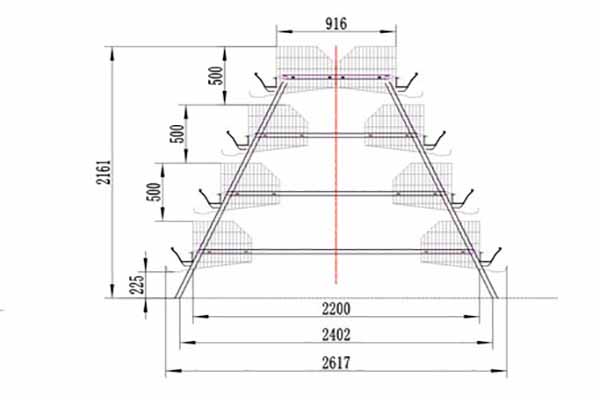Automated Equipment for Disease Prevention in Kenyan Chicken Farms
Time : 2025-06-27
Kenyan chicken farms have long been faced with the challenge of disease prevention, a critical aspect of sustainable poultry production. The integration of automated equipment has emerged as a key strategy to enhance biosecurity and reduce the incidence of diseases that can severely impact flock health and farm profitability. This article delves into the various automated equipment solutions tailored for disease prevention in Kenyan chicken farms, highlighting their importance, implementation, and potential benefits.
Introduction to Automated Equipment in Poultry Farms
Automated equipment in poultry farms refers to mechanical devices and systems designed to automate various farm operations, from feeding and watering to monitoring and managing environmental conditions. These technologies are crucial in enhancing biosecurity, reducing labor costs, and improving overall flock health. In the context of Kenyan chicken farms, the use of such equipment is particularly relevant due to the region’s unique challenges, including climate, disease prevalence, and labor availability.
Climate Control Systems
Kenya’s diverse climate presents both opportunities and challenges for chicken farming. Automated climate control systems play a vital role in maintaining optimal environmental conditions for poultry, which is crucial for disease prevention. These systems can include:
– Automated Ventilation: Adjusting the air exchange rate to ensure a balanced atmosphere, reducing the risk of respiratory diseases.
– Heating and Cooling Units: Controlling the temperature to prevent heat stress and maintain a comfortable environment for the chickens.
– Humidity Control: Managing humidity levels to prevent fungal growth and maintain the health of the flock.
Automated Feeding Systems
The use of automated feeding systems helps in delivering precise nutrition to the chickens, reducing the risk of nutrient deficiencies that can weaken the immune system. Key features of these systems include:
– Grain Delivery Systems: Ensuring a continuous supply of feed without human intervention, reducing the risk of cross-contamination.
– Feeding Amount Regulation: Adjusting the amount of feed based on the chickens’ age, weight, and health status.
– Intelligent Feeding Systems: Using sensors to monitor feed consumption and adjust the system accordingly.
Watering Systems
Access to clean, fresh water is essential for chicken health. Automated watering systems provide several advantages:
– Continuous Water Supply: Preventing dehydration and maintaining hydration levels, which are crucial for immune function.
– Water Quality Monitoring: Ensuring that the water is free from contaminants that can lead to diseases.
– Automated Cleaning: Reducing the risk of bacterial growth in water lines.
Monitoring and Early Warning Systems
Real-time monitoring of the flock’s health and environment is crucial for early detection of diseases. Automated systems can include:
– Temperature and Humidity Sensors: Providing real-time data on environmental conditions.
– Video Surveillance: Allowing farm managers to monitor the flock remotely and identify potential health issues.
– Health Monitoring Devices: Using sensors to detect physiological changes in chickens, such as changes in body temperature or respiration rate.
Sanitation and Biosecurity Measures
Maintaining high levels of biosecurity is essential in disease prevention. Automated sanitation systems can include:
– Disinfection Robots: Automating the disinfection process to ensure that the farm is free from pathogens.
– Automated Entry and Exit Gates: Preventing the entry of unauthorized personnel and pests.
– Footbaths: Reducing the risk of disease transmission by sanitizing the feet of farm workers and visitors.
Training and Implementation
Implementing automated equipment in Kenyan chicken farms requires comprehensive training for farm managers and workers. The training should cover:
– Operation and Maintenance: Ensuring that the equipment is used correctly and maintained properly.
– Problem-Solving: Equipping farm staff with the knowledge to troubleshoot common issues.
– Health and Safety: Ensuring that all operations are conducted in a safe manner.
Conclusion
The integration of automated equipment for disease prevention in Kenyan chicken farms is a strategic move towards sustainable poultry production. By controlling the environment, managing nutrition, and monitoring health, these technologies can significantly reduce the risk of diseases, improve flock health, and enhance farm profitability. As the poultry industry continues to evolve, embracing these advancements will be crucial for the success of Kenyan chicken farms.












